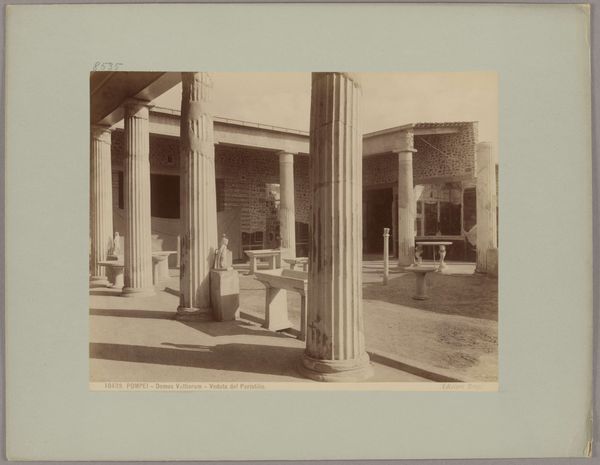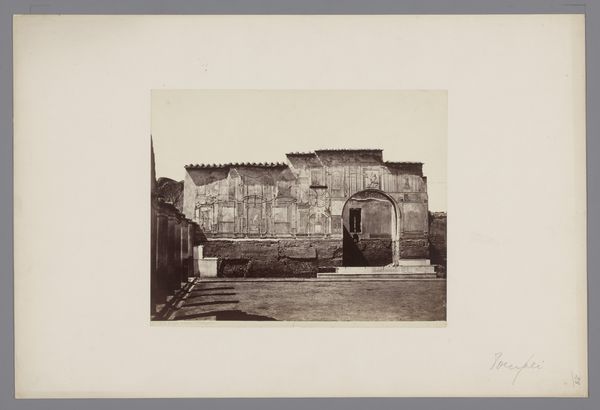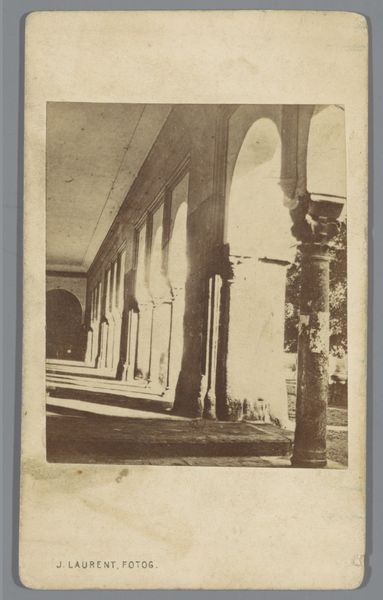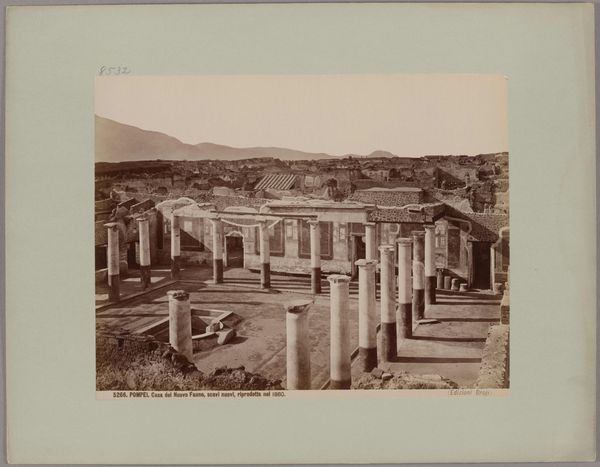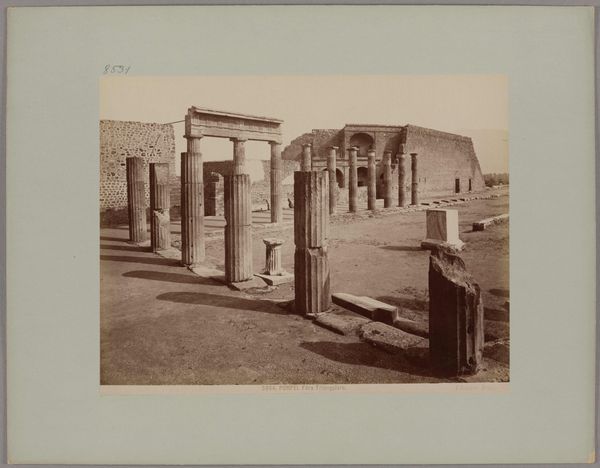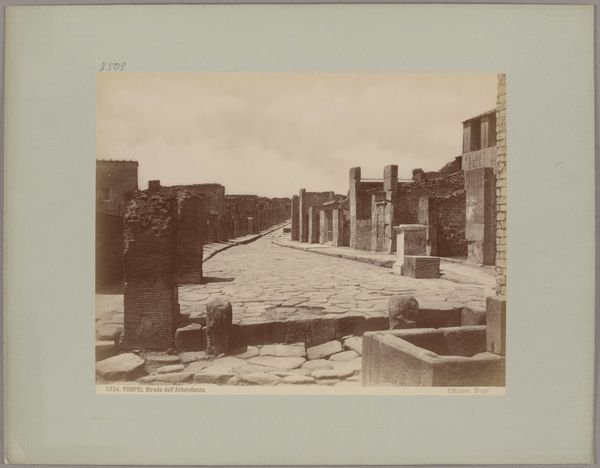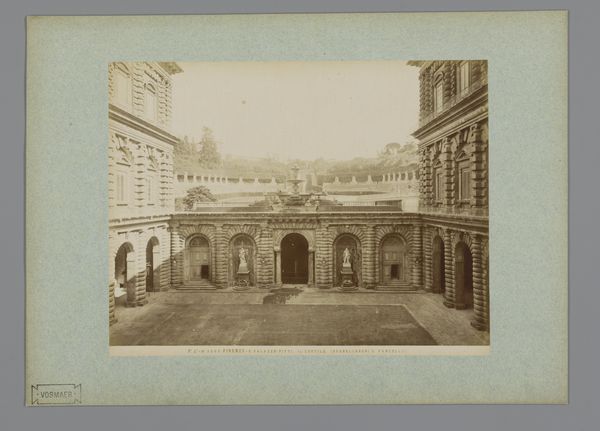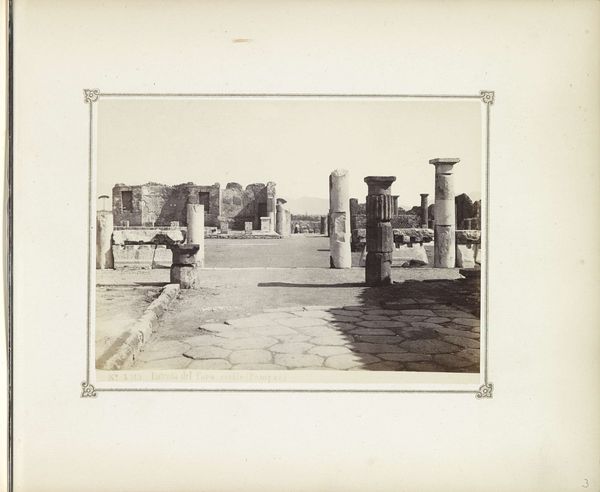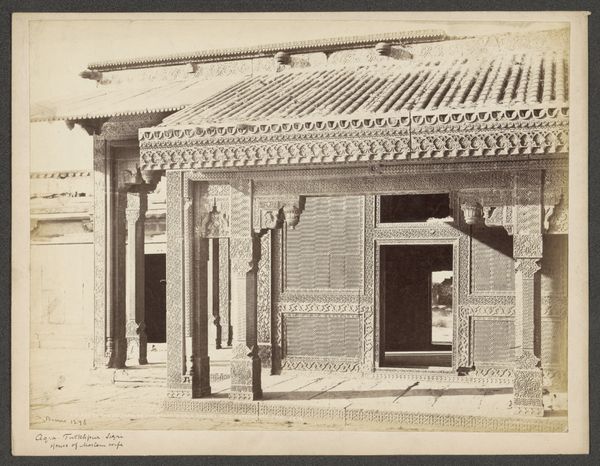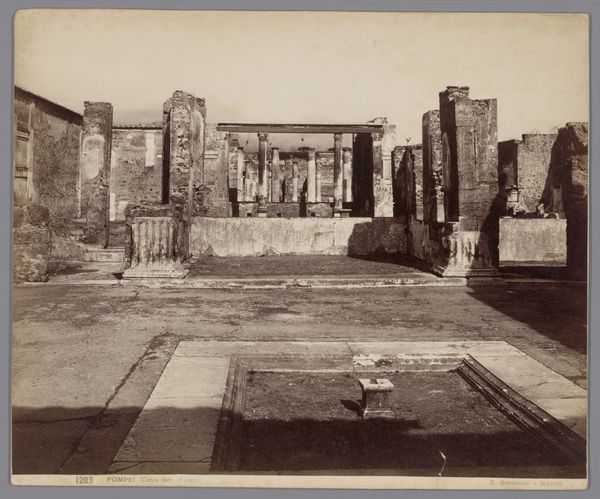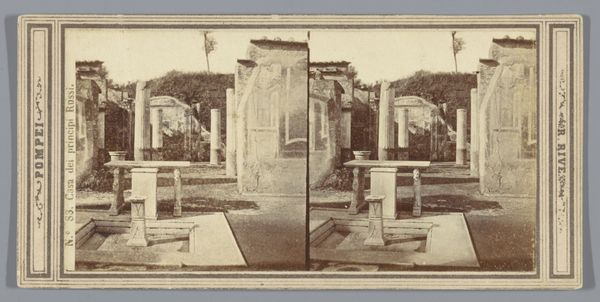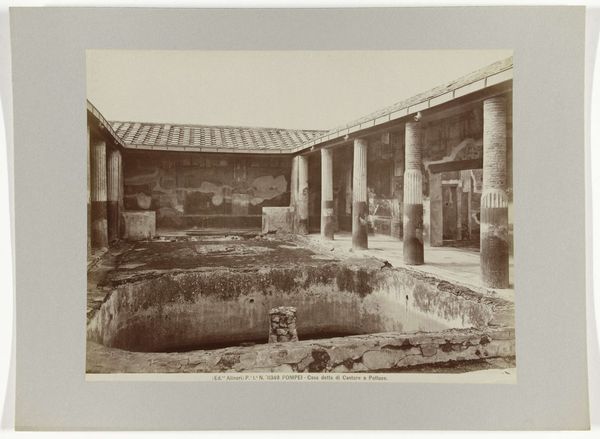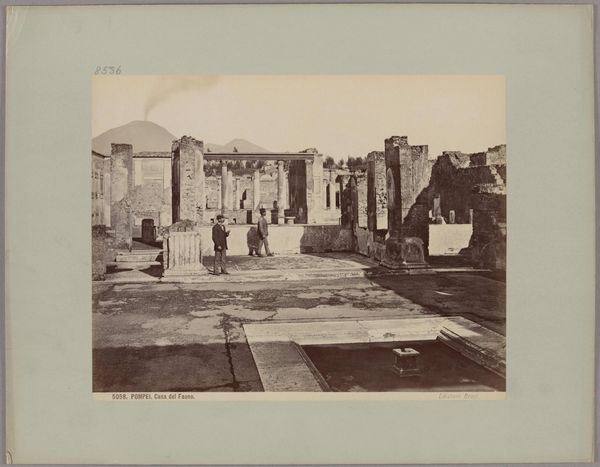
albumen-print, paper, photography, albumen-print, architecture
#
albumen-print
#
16_19th-century
#
landscape
#
paper
#
photography
#
ancient-mediterranean
#
albumen-print
#
architecture
Copyright: Public Domain
Editor: Here we have Giacomo Brogi’s albumen print, "Pompeii, House of the Frog," likely taken in the 1880s or 1890s. It feels both incredibly ancient and strangely immediate, like a stage set waiting for actors. What catches your eye when you look at this, especially considering its historical context? Curator: What strikes me is how photography, even in the late 19th century, participated in the archaeological project and the "tourism of ruins". These images were not just objective records, but constructed views that catered to a public fascination with the rediscovered past, particularly a romanticized version of antiquity. Do you think Brogi's framing influences how the public perceived Pompeii? Editor: Definitely! The clean lines and the almost staged quality—it's not just showing ruins; it's presenting a narrative. It almost makes the viewer feel like a wealthy Roman strolling through their courtyard. But were these images truly accessible, or more for the elite? Curator: That’s a key question. The distribution of these photographs was part of a larger system where access to the past was mediated by wealth and social standing. The emerging museum culture played a role, too. Images like these fed the growing desire for authenticity and the ownership of historical narratives, and often justified colonial narratives as well. How might that influence our reading of this photograph today? Editor: It’s a reminder that even a seemingly straightforward image can carry layers of cultural and political meaning. It's fascinating to see how photography, even back then, shaped public perception and historical understanding. Curator: Precisely. Thinking about how these images circulated—and who had access to them—adds another layer to our understanding of not just Pompeii, but the social context of its rediscovery. It forces us to consider whose story is being told and who is telling it.
Comments
No comments
Be the first to comment and join the conversation on the ultimate creative platform.
